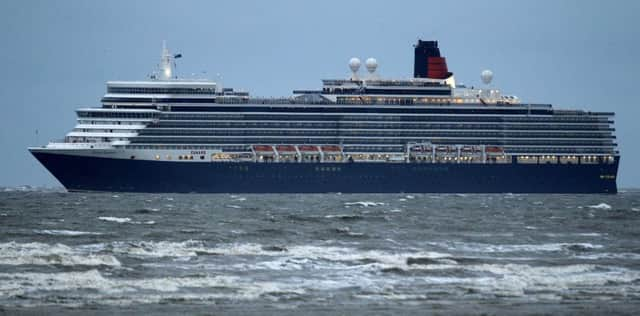Cruise policy changed after death of holidaymaker


Matthew Nicholls, who was on the pontoon of Cunard’s Queen Elizabeth when 75-year-old Mary Atherton fell between it and a small tender boat, gave evidence at Preston Coroner’s Court yesterday.
Mrs Atherton, a retired teacher from Penwortham, had had disclosed a series of mobility problems at the time of booking. She walked with a stick and took a short stride.
Advertisement
Hide AdAdvertisement
Hide AdSpeaking about the exit from the tender, Mr Nicholls - who gave the okay to disembark - said he was aware of a passenger, later revealed to be Mrs Atherton, with “obvious mobility issues.”


He admitted that he allowed another passenger to perform a crewman’s job in helping to assist her on one side as she ascended steps on the boat.
He said: “He was supporting her on the left, something out crew would have done if he hadn’t been there. Now I’m very clear, it’s two of our crew members.”
He also said crew on the pontoon and tenders relied on a visual assessment of passengers’ mobility and he had not been provided with information about specific passengers. Now proceedures have changed.
Advertisement
Hide AdAdvertisement
Hide AdMr Nicholls said: “Prior to the incident, our identification of those with mobility problems could have been improved.”


Mr Nicholls agreed with previous evidence that a gap had opened up between the tender and the pontoon as Mrs Atherton stepped forward. He estimated the gap was around 40cm and could have been caused by a larger wave.
He said the sea conditions were calm and that there was “always an extra bit of movement initially from the tender weight. It is is not unusual for movement at the pontoon.”
He said the tender had been travelling at a normal speed and crews were competent.
Advertisement
Hide AdAdvertisement
Hide AdIn a statement the following day, Mr Nicholls said he thought four lines had been used to secure the tender, but on reviewing CCTV evidence, accepted that was not the case.
Infact two springlines had been used, one at the front and one at the back. But he insisted this was not a safety issue and had carried out appropriate checks.
He said: “I checked the springlines and given the weather, the springlines were the only lines that were necessary.”
He added: “Gaps frequently open when we’re in the course of a tendering operation and crews would temporarily pause.
“The timing is an unfortunate, tragic event.
“Had I thought for a minute this was not safe, I would have stopped the operation.”
He also denied a narrow step on the tender boat had caused Mrs Atherton problems. (Proceeding)